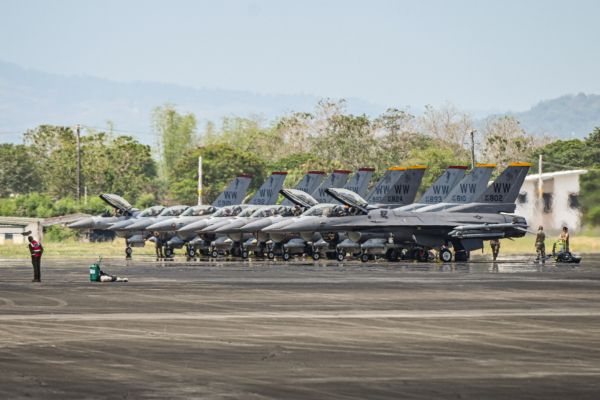The US military’s Indo-Pacific strategy has undergone a significant transformation, with the United States upgrading aircraft runways on remote islands in the Indo-Pacific region. They are rebuilding some airports that were used during World War II, no longer relying solely on a few large air force bases but instead dispersing fighter jets to enhance their capability to counter China’s massive missile arsenal.
According to a report by The Wall Street Journal on Monday, the once remote Pacific airstrips used by the US to drop atomic bombs on Japan during World War II are now being rebuilt with China as the target in mind.
In order to avoid becoming conspicuous targets for the Chinese military in times of conflict, the US military has shifted its focus to dispersing aircraft rather than concentrating them at a few major air force bases. They are identifying, upgrading, and restoring usable aircraft runways in the Indo-Pacific region as part of their efforts known as “Agile Combat Employment” (ACE).
For decades, US aircraft have been centralized at a few large air force bases. In the event of a conflict, China could target these well-known bases with significant firepower, destroying aircraft and runways, thus weakening the US airpower.
Michael Winkler, Deputy Director of Air and Cyberspace Operations for the Pacific Air Forces, emphasized the importance of not concentrating all aircraft in one visible and easily targetable location. He stressed the need for dispersal and flexibility, with aircraft not tied down to a single base.
Winkler stated that they are interested in utilizing as many runways as possible, whether located on US territory or in other countries. This would require Washington to engage in challenging negotiations with allies and friendly governments to gain access to these countries in times of crisis, although the military has not yet initiated these discussions until the moment of need.
Currently, the US is sending Air Force personnel to potential locations to assess terrain and prepare facilities to better suit military use. In the Philippines at Basa Air Base, the US is investing in building a taxiway and a ramp large enough to accommodate American aircraft, along with upgrading the runway and constructing a warehouse.
Furthermore, the US plans to upgrade airports on Saipan Island and the Republic of Palau in the coming years. In northern Australia, substantial funds are being allocated to two air force bases – construction of fuel storage facilities in Darwin and a squadron operations facility. In Tyndall, a base is being equipped with fuel storage, a taxiway, and other infrastructure to house B-52 bombers.
In August, the US deployed B-2 stealth bombers to an air force base near Brisbane, Australia, showcasing the military’s adaptability to the changing realities of frequently shifting locations.
Stacie Pettyjohn, Senior Research Fellow and Director of the Defense Program at the Center for a New American Security, emphasized that the US military’s shift to operating in more locations with smaller units reduces China’s potential to launch large-scale preemptive strikes.
However, analysts point out that US investment in infrastructure is still insufficient, with the pace of military infrastructure development lagging behind demand. Due to financial constraints, many projects are awaiting commencement, prioritizing the purchase of new aircraft and concrete pouring.
Logistical support is another challenging problem, as it involves transporting equipment, parts, fuel, ammunition, and support personnel to dispersed airfields. One proposed solution is to pre-position supplies, ensuring rapid delivery to the appropriate locations in the event of hostilities on a rapidly changing battlefield.
Winkler emphasized the importance of having maintenance personnel to support deployed aircraft, as combat situations may require loading weapons onto aircraft, refueling, and other essential tasks. He stressed the need to fully disperse all necessary equipment within the operational theater.

